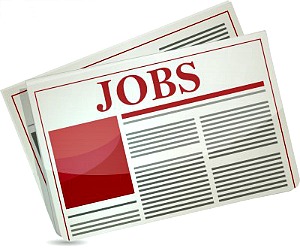25 Cover Letter Tips and Cover Letter Help
How to Write A Cover Letter
25 Cover Letter Tips | 25 Resume Writing Tips | 25 Tips on Interview Techniques
Have this 25 Cover Letter Tips to avoid negative and be sure the letter has a professional appearance. An effective Cover Letter should be easy to read, have large typeface than the resume.......

25 Cover Letter Tips For Getting You Hired
In general, all cover letters should:
Explain why you are sending a resume
Don't send a resume without a cover letter.
Don't make the reader guess what you are asking for; be specific: Do you want a summer internship opportunity, or a permanent position at graduation; are you inquiring about future employment possibilities?
Tell specifically how you learned about the position or the organization
A flyer posted in your department, a web site, a family friend who works at the organization. It is appropriate to mention the name of someone who suggested that you write.
Convince the reader to look at your resume.
The cover letter will be seen first.
Therefore, it must be very well written and targeted to that employer.
Call attention to elements
of your background, education, leadership, experience - that are relevant to a position you are seeking. Be as specific as possible, using examples.
Reflect your
attitude, personality, motivation, enthusiasm, and communication skills.
Provide or refer to any information specifically requested
in a job advertisement that might not be covered in your resume, such as availability date, or reference to an attached writing sample. The following 25 tips give you key points to let you know how to write your best cover letter.
1. Use customized stationery with name, address, and phone number on top. Match your stationery to that of your resume-it shows class and professionalism.
2. Customize the cover letter. Address it to a specific individual. Be sure you have the proper spelling of the person's name, his or her title, and the company name.
3. If you don't wish to customize each letter and prefer to use a form letter,use the salutation "Dear Hiring Manager." (Do not use "Dear Sir." The hiring manager may be a woman.)
4. The cover letter is more informal than the resume and must begin to build rapport. Be enthusiastic, energetic, and motivating.
5. The cover letter must introduce you and your value to a potential employer.
6. Be sure to date the cover letter.
7. An effective cover letter should be easy to read, have typeface than the resume (12 point type is a good size), and be kept short-4 to 5 short paragraphs will usually do the job.
8. Keep the cover letter to one page. If you are compelled to use two pages, be sure your name appears on the second page.
9. The first paragraph should ignite interest in your candidacy and spark enthusiasm from the reader. Why is the reader reading this letter? What can you do for him/her?
10. The second paragraph must promote your value. What are your skills, abilities, qualifications, and credentials that would meet reader's needs and job requirements?
11. The third paragraph notes specific accomplishments, achievements, and educational experience that would expressly support the second paragraph. Quantify these accomplishments if possible.
12. The forth paragraph must generate future action. Ask for an interview or tell the reader that you will be calling in a week or so to follow up.
13. The fifth paragraph should be a short one, closing the letter and showing appreciation.
14. Demonstrate specific problem-solving skills in the letter, supported by specific examples.
15. Unless asked to do so, don't discuss salary in a cover letter.
16. If salary history or requirements are asked for, provide a modest window (low to mid thirties,for example) and mention that it is negotiable(if it is).
17. Be sure the letter has a professional appearance.
18. Be sure there are no spelling, typographical, or grammatical errors.
19. Be sure to keep the letter short and to the point. Don't ramble on and on.
20. Do not lie or exaggerate. Everything you say in a cover letter and resume must be supported in the eventual interview.
21. Be careful not to use the pronoun "I" excessively. Tie together what the company is doing and what their needs might be. To come full circle, explain how you fit into their strategy and can close potential gaps in meeting their objectives.
22. Avoid negative and controversial subject matter. The purpose of a cover letter and resume is to put your best foot forward. This material(job hopping, prior termination,etc.)can be tactfully addressed in the interview.
23. If you are faxing the cover letter and resume, you need not send a fax transmittal form so long as your fax number is included in the heading along with your telephone number.
24. To close the letter, use Sincerely, Sincerely yours, Respectfully, or Very truly yours.
25. Be sure to sign the letter.
Cover Letter Tips article is written by authors Jay A.Block & Michael Betrus at 101 BEST RESUMES
Cover Letter Tips Related Articles
|
Technology Professionals |


